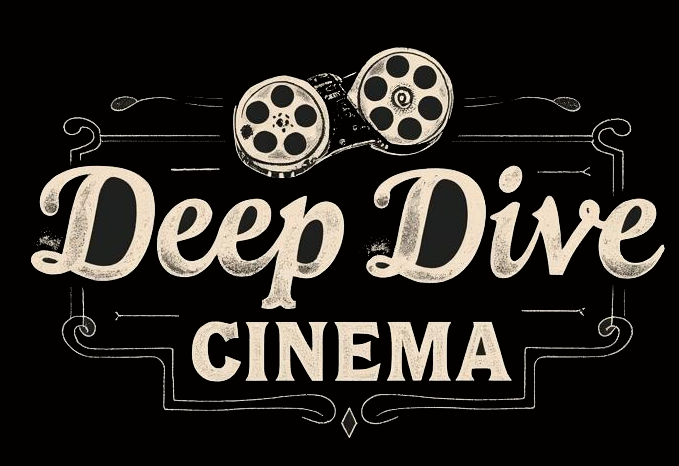
🎬 The Grand Illusion: How Horror Wears the Mask of Every Other Genre
A Deep Dive Cinema Editorial for the Halloween Season
[cite_start]“We’re not here for the obvious. We’re here for the overlooked.” [cite: 4] — The Deep Dive Cinema Manifesto
October invites us to the cinematic graveyard, to dance with skeletons and ghosts. [cite_start]But here at the archive, we honor the souls behind the screams, the craft buried beneath the blockbuster noise. [cite: 5] Too often, horror is relegated to the cheap thrills section, dismissed as a lesser art form built on jump scares and gore.
The simple truth is, horror isn’t a single genre. It's a genre-blending-alchemist. It’s a shapeshifter that wears the skin of every other cinematic form to achieve its singular, chilling goal: to unnerve us. It borrows, steals, and reanimates the tropes of drama, romance, comedy, and science fiction, proving itself to be perhaps the most versatile and artistically ambitious playground in all of cinema.
Let’s dissect the monster.
The Gothic Romance & The Slow-Burn Tragedy
Before there were slashers, there was shadow. Look at F. W. Murnau’s Nosferatu (1922). On the surface, it’s the first great vampire film. But watch it with the Levine Protocol in mind. See it not as a creature feature, but as a silent-film-tragedy. It’s a story of profound, pestilent loneliness, of a being cursed to exist outside of love and light. Murnau uses the language of German Expressionism—stark compositions, elongated shadows, a creeping sense of architectural dread—to tell a story of doomed desire. The horror isn't the monster; it's the aching, tragic void that created him.
The Psychological Drama & The Domestic Nightmare
[cite_start]When we discuss the technical craft of cinema, we must discuss Stanley Kubrick’s The Shining (1980). [cite: 7] Is it a ghost story? Absolutely. But its true power lies in its foundation as a psychological-domestic-drama. It’s a film about a family disintegrating under the pressures of isolation, alcoholism, and artistic failure.
Kubrick’s genius was in using the Overlook Hotel’s impossible geography and cavernous, echoing spaces—his mastery of mise-en-scène—to externalize Jack Torrance's fracturing psyche. The horror isn’t just from the hotel's spirits; it’s from watching a husband and father become the monster. It’s the story of a marriage turning into a cage match, and that is a drama more terrifying than any ghost.
The Melodrama of Guilt & The Chamber Piece of Grief
Ghost stories are rarely about the ghosts. They are about us. They are melodramas built on the foundations of regret. Consider Ghost Story (1981), a film about four elderly men haunted not by a phantom, but by a shared, decades-old sin. It’s a story of guilt given form, where the supernatural serves as a reckoning for a very human crime. The film is less a haunting and more a funereal confession.
Similarly, Mikael Håfström’s 1408 (2007), adapted from a Stephen King story, isn’t just about a haunted hotel room. It’s a tightly-wound chamber piece about a cynical writer forced to confront the grief from his daughter’s death. The room doesn't just show him ghosts; it weaponizes his own memories, turning his personal tragedy into a relentless psychological assault. It is a one-man-show about the nature of loss, disguised as a haunted house thrill ride. [cite_start]We celebrate the "visual poetry of a hallway, the sound design of loneliness," and this film is a masterclass in both. [cite: 20]
The Genre-Shift & The Ultimate Hybrid
Modern horror has perfected the art of the Trojan Horse. A film will present itself as one thing, only to peel back its face and reveal the monster beneath.
- Alien (1979) is a science-fiction film, a "truckers in space" procedural... right up until it becomes a haunted house slasher where the halls of the Nostromo are the dark corridors and the Xenomorph is the killer that can’t be stopped.
- From Dusk Till Dawn (1996) famously begins as a gritty crime thriller before violently slamming the gearshift into a full-blown, blood-soaked vampire siege—a classic Western standoff with fangs.
- Get Out (2017) operates as a razor-sharp social satire and a dark comedy of manners, using the tropes of those genres to build a unique and terrifying foundation for its horrifying third act.
Horror is the ultimate cinematic parasite and the grandest of collaborators. It can be a war film (Overlord), a Western (Bone Tomahawk), a teen comedy (Freaky), or a devastating family drama (Hereditary). It doesn’t just exist within its own borders; it redraws the map of every other genre it touches.
So as we celebrate this season, let’s look past the obvious. Let’s look at the craft, the borrowed bones, the repurposed hearts. [cite_start]We aren't just fans of horror; we are archivists, and this genre is one of the richest, most complex sections in the entire collection. [cite: 21] We’re not just watching a scary movie; we’re watching cinema itself, held up to a dark, revealing mirror.
Cut/print when you’re ready.
🎞️ Forever curating, – Cinema Sage
